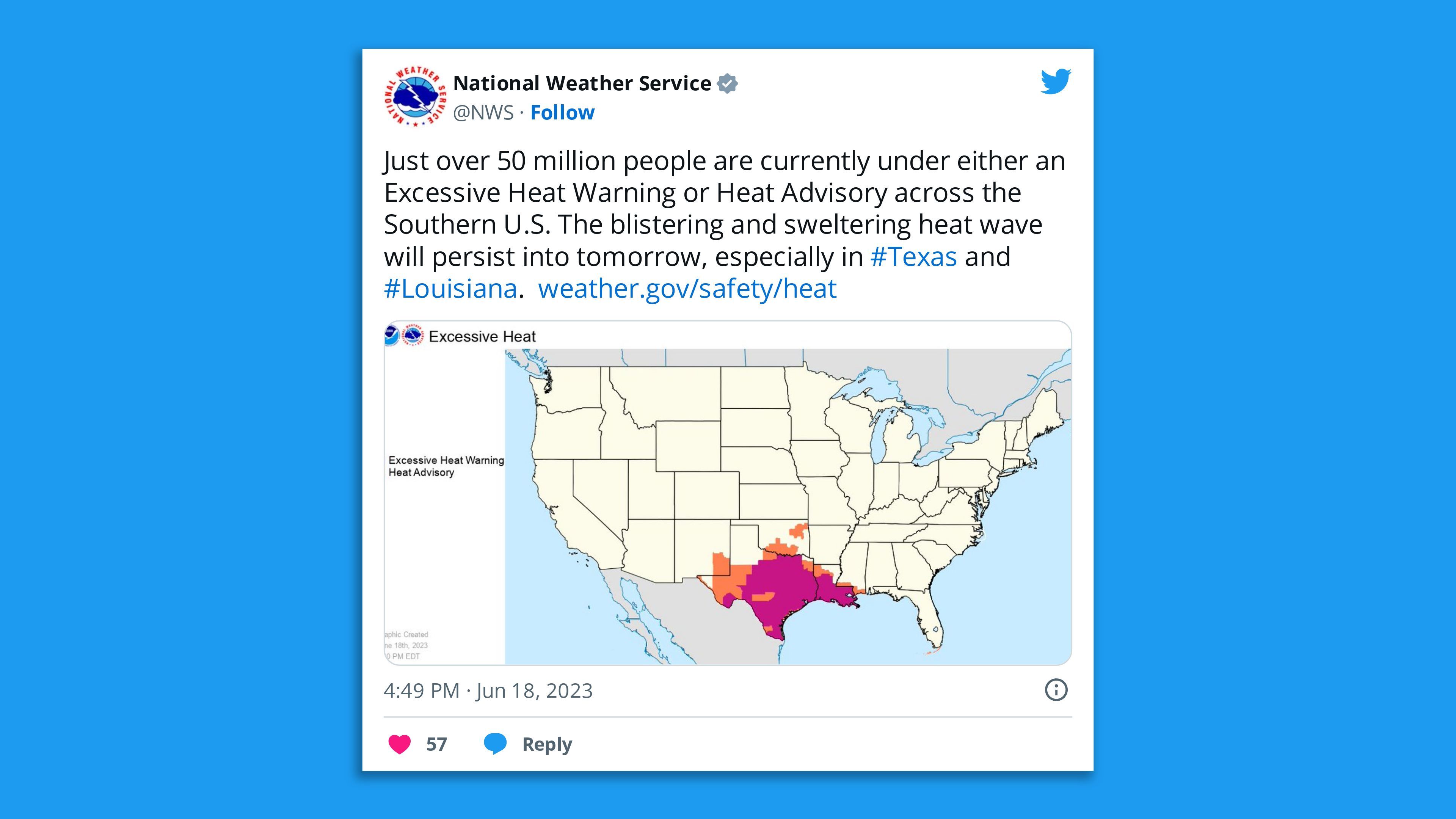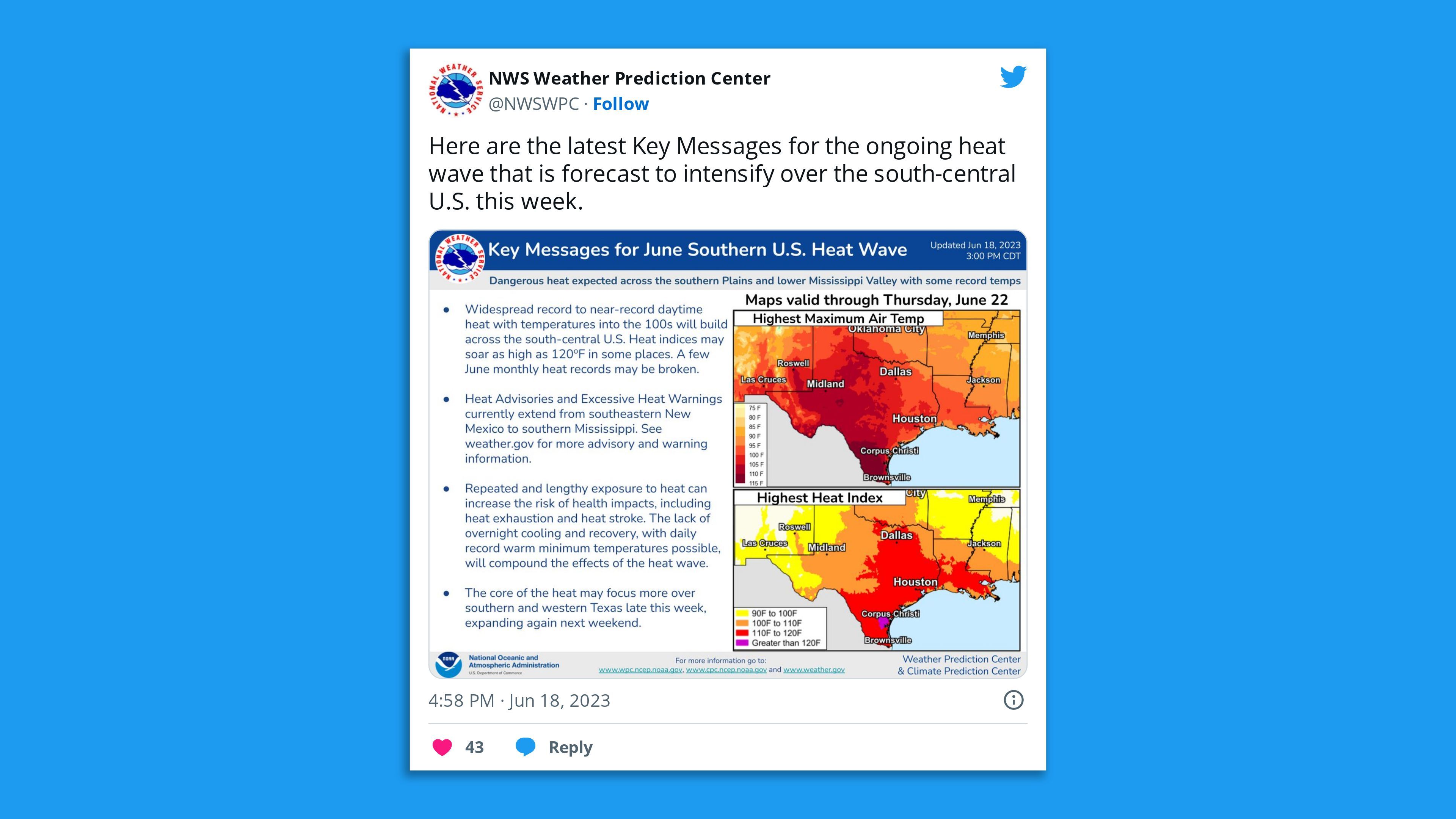Rebecca Falconer, Andrew Freedman
An extreme, prolonged heat wave from Texas to Louisiana is helping fuel deadly southern storms that have resulted in the deaths of at least five people and left hundreds of thousands without power.
State of play: The severe weather caused power outages for more than 220,000 people in Oklahoma, over 95,000 others in Texas and some 88,000 in Louisiana as of early Monday, per utility tracker poweroutage.us. An estimated 37,000 people in Mississippi and 34,000 others in Arkansas also experienced outages.
- Tornado watches were issued through 2am Monday for some 4 million people in Louisiana, Arkansas, Tennessee and Mississippi — where the National Weather Service confirmed a tornado was on the ground northeast of Bay Springs late Sunday local time, as it urged people: “Take cover now!”
Of note: Louisiana Gov. John Bel Edwards declared a state of emergency for north and central parts of the state on Saturday in response to the storm-related outages and in anticipation of “multiple rounds of thunderstorms” into Sunday.
Meanwhile, Texas Gov. Greg Abbott on Saturday visited Perryton in the Panhandle, where a tornado killed three people on Thursday.
- One person died during severe weather in Mississippi on Friday in Madison County, just over 30 miles north of Jackson, and another was killed during a suspected tornado event in Escambia County, Florida, Thursday.

Threat level: The National Weather Service said this “blistering” heat wave with excessive heat warnings and advisories would continue affecting Texas and portions of the southern U.S throughout Father’s Day and into Monday.
- Strong to severe thunderstorms and heavy to excessive rainfall “will be common the next few days in the Southeastern section of the U.S.”
Separately, the NWS warned triple-digit temperatures would lead to critical fire weather conditions in parts of the Southwest in the coming days.
- This includes in New Mexico, where firefighters are already battling a large fire, and Arizona, where Phoenix on Sunday recorded its hottest temperature of the year so far — 109 degrees Fahrenheit.
Driving the news: The severe weather is due to a highly unusual summer setup with a branch of the jet stream screaming across the south, helping to trigger severe storms with large hail, strong straight-line winds and tornadoes.
- Typically the jet stream is located well north this time of year.
By the numbers: Heat indices have reached 120 degrees in Texas and Louisiana, and the heat index in Kingsville in the south of the Lone Star State hit 125° on Thursday.
Of note: What’s particularly unusual is the extent of 80°F dew points, leaving the air feeling extremely sultry. More humid heat can be tied in part to warmer-than-average waters in the Gulf of Mexico.
Context: Climate change is causing heat waves to be more intense, longer-lasting and more frequent.
- It’s also resulting in more intense extreme precipitation events due to a warmer atmosphere that can hold more water vapor — providing added moisture and energy to storm systems.

Courtesy: (Axios)







